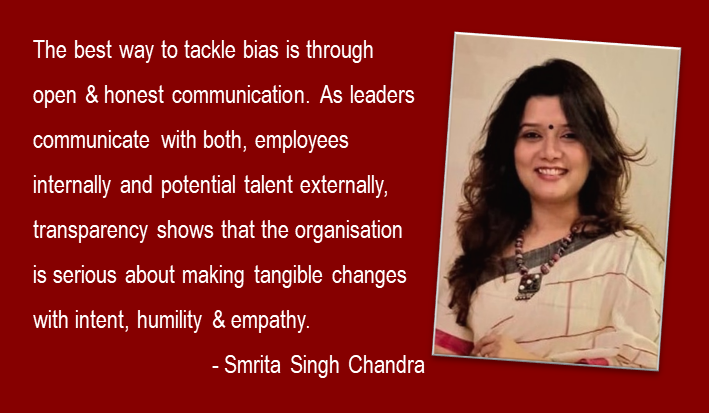Reaching beyond bias: where an inclusive workplace is a reality
DREAM SPORTS

Try picturing this – you’re a woman leading a function in a leading tech company. In a meeting, others do not interrupt you nor do they ignore your ideas until they are rephrased by men. When you’re assertive, you’re not labeled as ‘bossy’ or ‘emotional’. On a difficult day, you’re not told to ‘man up’. You’re not passed
up for a promotion over skepticism about your ability to manage work and family. You get equal pay for your effort and skills as your male counterparts.
Achieving gender equality is important for workplaces not only because it is the right thing to do, but also because it aids organisational health in more ways than one. Inclusive companies are 1.7x more likely to be innovation leaders and 1.8x more likely to be change-ready; they are likely to appeal to 76% potential employees looking for diverse workplaces; they attain 19% higher revenue than monolithic companies on account of greater innovation. But most importantly, inclusive companies have happier employees that thrive in a stable environment and are free from the stress of battling biases and navigating difficult social
situations at work each day.
This is the perspective of someone who is fortunate enough to be a part of a workplace that takes meaningful action in truly leveling the playing field. When organisations look beyond the ‘gender’ and just view the ‘talent’, women are able to deliver their full potential with the same challenges, opportunities and treatments as anyone else in their team. This is a pertinent task for emerging sectors like sports technology, a convergence of two traditionally male dominated fields where women’s participation and representation has been a topic of much debate. Since sports tech is still in its nascent stages in India with mammoth investments set to boost career opportunities more than ever before, there is immense potential to break the bias from the get-go and build a gender inclusive industry from the ground-up. A starting point would be to hire and nurture the right talent, but to do so without any presumptions. Talent should be looked at in isolation. Second would be the mindset and approach at the leadership level that needs to cascade within each organisation. Meanwhile, for women to feel truly welcome in STEM workplaces, they need to believe in their capabilities and own their space.
Creating an equitable and inclusive workplace is not a complicated concept. It starts from the simple act of paying attention to the attitudes or implicit behavior patterns that reinforce stereotypes and not letting them go unaddressed. The best way to tackle bias is through open and honest communication. As leaders communicate with both employees internally and potential talent externally, transparency shows that the organisation is serious about making tangible changes with intention, humility and empathy.
An organisation’s commitment to tackling bias is also reflected in the choices its members make while communicating with each other – everything down to language choices can have an impact on diversity, equity, and inclusion. Inclusive language builds the foundation for a strong, welcoming culture and the aim is to ensure every individual is cognizant of the impact their words have on each other and their customers.
Every year, in the weeks leading up to International Women’s Day (IWD), the spotlight is on organisations across the world as they recalibrate their contribution towards gender diversity, equality and inclusivity (DEI). Many find it useful to report on their DEI efforts to either showcase their commitment to the demographic they cater to or grab the attention of promising talent who are looking for companies where they can bring their authentic selves to work each day. But these conversations need to happen beyond the day itself, with year-long tangible and sustainable action to give it credibility.
The last few years have seen important conversations about discrimination brought to the fore, and the workplace is no exception. Ultimately, when the most innovative policies and initiatives attempt to challenge and change the very conditions that brought about biases to begin with, the result is an organisation where diversity, inclusion, equity and access are part of the everyday experience.
